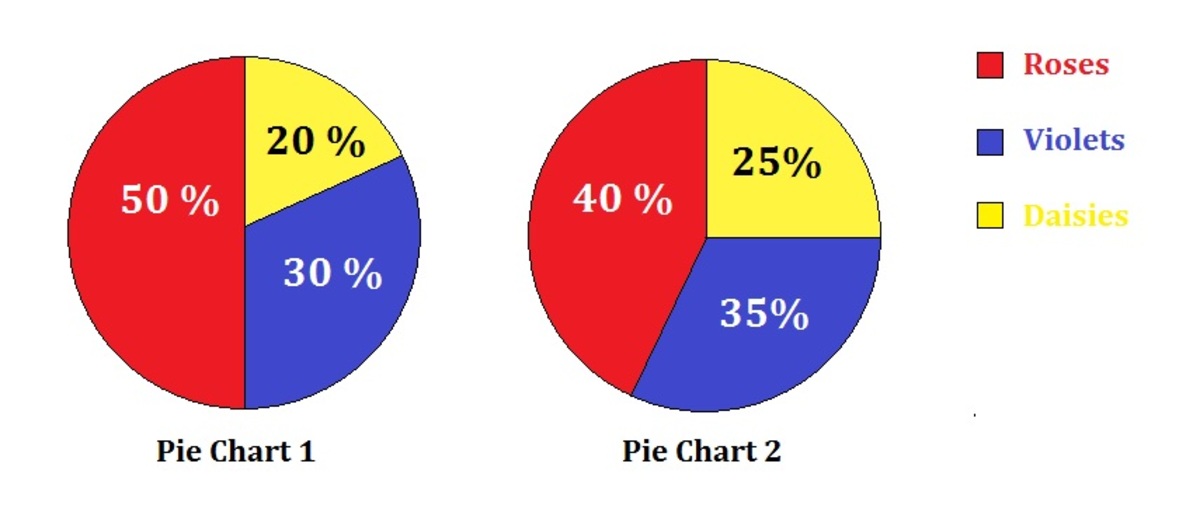Roses are red. Violets are blue.

A flower shop sells 3 types of flowers: red roses, blue violets, and yellow daisies. In the opening time of the shop, the ratios for each kind of flowers can be classified as shown in the pie chart 1.
At the end of the day, the shop can sell 52 roses, 18 violets, and 10 daisies, and the rest of the flowers can be sorted out as shown in the pie chart 2.
How many roses are left in the shop?
Bonus : Can you calculate for the violets and daisies, too?
The answer is 48.
This section requires Javascript.
You are seeing this because something didn't load right. We suggest you, (a) try
refreshing the page, (b) enabling javascript if it is disabled on your browser and,
finally, (c)
loading the
non-javascript version of this page
. We're sorry about the hassle.
Let x be the total amount of all flowers at the opening time. Then at the end of the day, the shop will have x − 5 2 − 1 8 − 1 0 = x − 8 0 flowers left.
Now at the beginning, the roses are accounted for 50% of all flowers, so we have 1 0 0 5 0 x roses at the start.
At the end of the day, 52 roses are sold, so we have 1 0 0 5 0 x - 5 2 roses left.
This amount is accounted for 40% of the rest of the flowers (x-80), so we can put them into an equation:
( 1 0 0 5 0 ) x − 5 2 = ( 1 0 0 4 0 ) ( x − 8 0 )
( 1 0 0 5 0 ) x − ( 1 0 0 4 0 ) x = 5 2 − 3 2 = 2 0
x = 2 0 0
Hence, at the end of the day, there are 2 0 0 − 8 0 = 1 2 0 flowers left, and by using the information in the pie chart 2, it's very simple to calculate the leftovers for all types of flowers:
( 1 0 0 4 0 ) ( 1 2 0 ) = 4 8 r o s e s
( 1 0 0 3 5 ) ( 1 2 0 ) = 4 2 v i o l e t s
( 1 0 0 2 5 ) ( 1 2 0 ) = 3 0 d a i s i e s